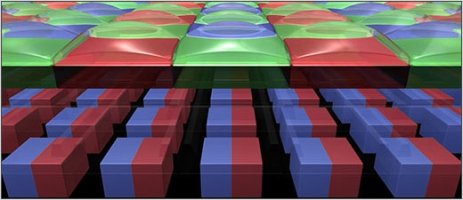At first, this whole 21mp and 85mp makes no sense, but when you start thinking, it kind of does.
Let me explain.
On a normal 20 mp sensor, you have 20 million diodes. each pixel is covered with the bayer pattern which identifies every single pixel as either green, blue or red.
Since canon introduced dual pixel technology, we effectively had 40 million diodes on a "20mp" bayer sensor. That is 2 diodes hiding behind each green, blue or red screen. The 2 diodes have made the dual pixel focusing possible calculating the micro-contrast between each set of 2 diodes for a global "phase difference". Hence the name "dual pixel" because indeed it's 2 pixels effectively behind each bayer piece.
Now, since those dual pixels (diodes) were arranged in such a way that they were twice as tall as they are large, it didn't make sense to read them as separate pixels for purposes of resolving the image. Pixels would have been twice as high as they are large.

This would have caused visible "stepping" or aliasing problem. Their only purpose was for focusing. So a 40 million diode sensor was still 20mp since each bayer piece was counted as 1 pixel. In other words, the input information of the 2 diodes were combined into 1 output pixel to keep everything square and proper.
But now, with introduction of quad pixel technology which further improves focusing, we solve the problem we had bafore with only 2 diodes behind each bayer screen. You effectively have 4 diodes (pixels) behind each green, blue or red bayer screen. This is a 2 by 2 square. Each diode being the same size. This means that you have 2 options of how you can read the information. You have a total of 80 million diodes. Either you read them as a 20mp sensor - 4 diodes behind each red, green, blue screen constitute one pixel - or your read each diode (so 80 million of them) as an indivudual pixel and simply modify your debayering algorithms.
Now, these debayering calculations would be way more complex and more taxing on the processor (I think up to 16 times) if you decided to use all 80 million diodes as pixels instead of using only the 20mp resolution, but it's possible. Hence, shooting 20 mp at 30 frames seems reasonable, but 20 frames at 80 mp seems a little sketchy. I think 10 fps at 80pm would be quite the achievement with the processing power involved. Unless they throw 2 current X processors into the R1, who knows how much processing power that actually is... maybe enough for 20 fps at 80mp despite the heavy processing needed.


